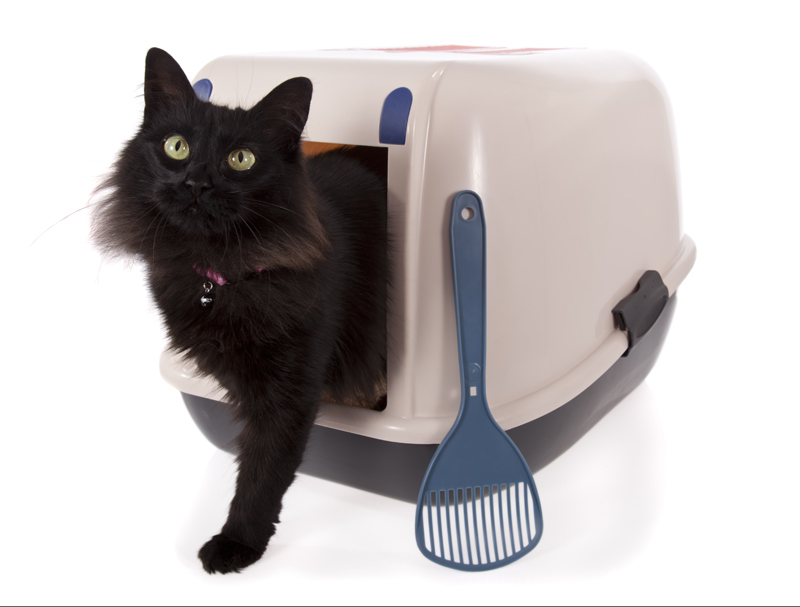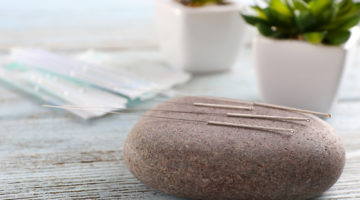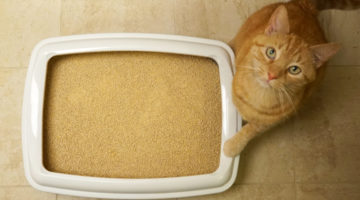Is your cat straining when he goes to his litter box? You might assume he’s constipated but he’s more likely to be suffering from a common and potentially dangerous urinary tract disorder known as FLUTD.
One morning, Doreen’s young male cat Flicker seemed unusually restless and vocal. Concerned, she followed him to the litter box, where he scratched distractedly then squatted as if to urinate. Nothing happened, and Flicker got off the litterbox, only to return moments later to try again. Now thoroughly alarmed, Doreen bundled Flicker into his carrier and took him to the emergency vet, where he was diagnosed with feline lower urinary tract disorder (FLUTD).
Previously called FUS or feline urological syndrome, FLUTD is the most common urinary tract disorder in cats. While usually not life-threatening – except in male cats, who can easily become obstructed or “blocked” – FLUTD can be a source of chronic pain and irritation in affected cats.
Signs and Symptoms
The cat with FLUTD typically begins urinating outside his litter box. In many cases, the urine is bloody because the inner mucosal bladder lining has been damaged by crystalline debris. Because of their shorter urethras, male cats often become obstructed and may not be able to urinate at all, or will only pass a few drops of blood or blood-tinged urine.
Many people mistakenly believe that an obstructed cat trying to use the litter box is constipated. Yet, true constipation rarely occurs in cats, while obstructive FLUTD is quite common. Any cat having difficulty urinating should be examined on an emergency basis. Prompt therapy is necessary to relieve pain and prevent bladder rupture and/or kidney failure.
Easy to Diagnose
Diagnosis is fairly simple. Generally speaking, laboratory testing such as blood testing, urinalysis and radiographs, while helpful, are not usually necessary. The cat’s history, along with his clinical signs and the results of a physical examination will most often allow for a diagnosis of FLUTD. Cats with chronic problems should have a full diagnostic evaluation including abdominal radiographs and an ultrasound examination of the urinary system to look for other problems such as bladder stones or tumors.
Conventional Treatment
The cause of FLUTD has never been identified, but there is specific treatment for it. Conventional doctors usually treat FLUTD cats with antibiotics. While these medications may be helpful for cats with particularly bloody urine, or those with obstructive disease who require urinary catheterization, they have been shown to be generally ineffective in treating FLUTD. This is probably because cats, unlike dogs and people, rarely have FLUTD because of bacterial infections. Cats treated with antibiotics improve within a few days – but so do cats not treated with antibiotics.
A cat with obstructive disease must have his bladder catheterized in order to relieve the obstruction and allow decompression of the distended bladder. Fluid therapy is also necessary to rehydrate the cat and allow for adequate flushing of his urinary tracts. In the most severe cases of chronic obstructive disease, surgery may be needed to prevent the obstruction from recurring. It’s important to keep in mind, however, that cats that have this surgery (called a perineal urethrostomy) will still develop nonobstructive FLUTD unless natural therapies are instituted to prevent further bladder irritation.
Antidepressant medications such as amitriptyline, while not proven effective in research studies, may or may not be clinically effective in some cats that experience FLUTD as a result of anxiety. (The same is true of herbs and homeopathics that show “antidepressant” effects).
Natural Therapies
Natural treatments have proven quite effective in many cats with FLUTD, especially those with chronic disease that does not adequately respond to conventional therapies.
- Glucosamine supplements, typically used for cats with arthritis, may help repair damage to the inner mucosal lining of the bladder.
- Herbs such as marshmallow and uva ursi, commonly used to treat patients with disorders of the urinary system, may help soothe the inflamed bladder and urethra and aid in flushing crystals and mucus out of the urinary tract.
- Homeopathic remedies such as nux vomica and cantharis have shown great effectiveness in cats with FLUTD. They’re easy to administer, especially in liquid form. I routinely use homeopathy as part of my therapy for cats with FLUTD. In many cases of chronic disease, regular use of homeopathics keeps cats in remission and prevents further recurrence of the disorder.
A Question of Diet
Medicated diets that aim to reduce the pH of the cat’s urine and decrease crystal formation may be helpful in selected cases. However, these diets are not typically considered to be natural or holistic and are best avoided in most cats.
While research has not shown a difference in cats fed wet versus dry foods, holistic veterinarians routinely observe a better response in cats fed an exclusively wet diet (canned, raw or cooked). Therefore, I routinely recommend that any cats with FLUTD be fed wet food.
FLUTD is the most common urinary tract disorder in felines. The definitive cause remains elusive, and conventional therapies such as antibiotics really have no place in treatment. But this is one condition that in most cases responds quite well to natural therapies and a proper diet.







No Comment